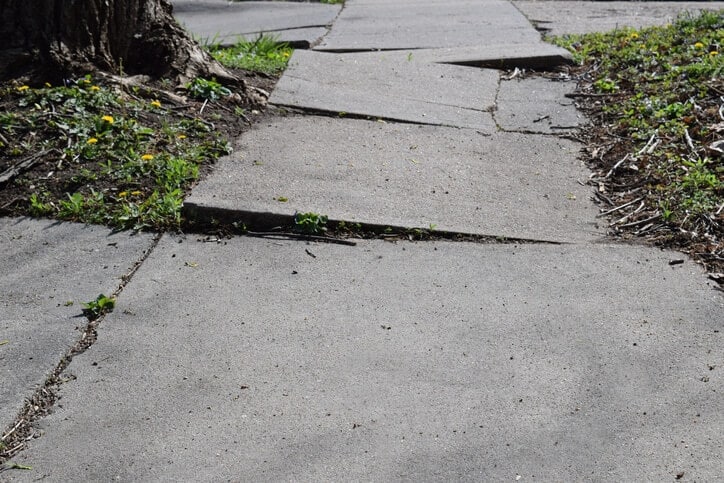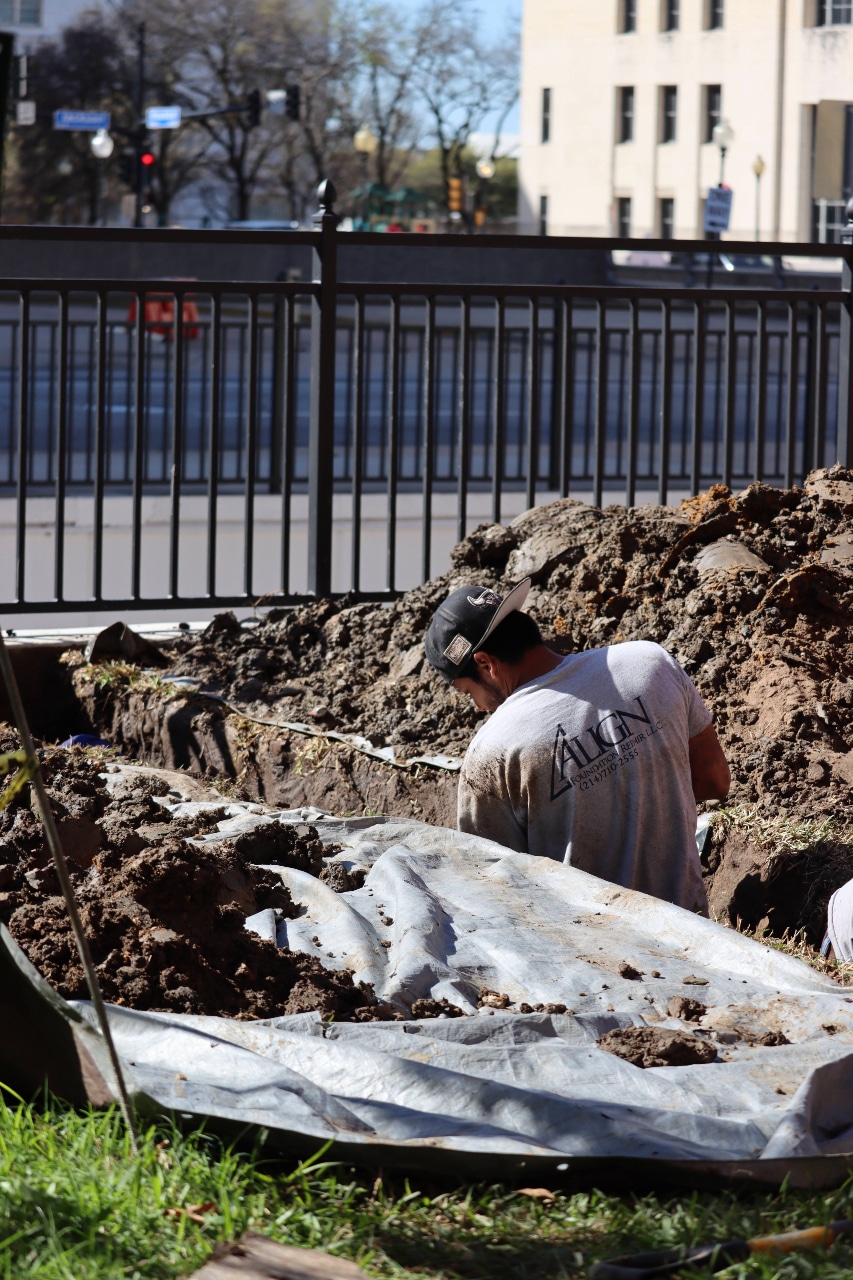Many property owners experience drainage issues around their homes. Addressing this is crucial to avoiding expensive repairs related to foundation damage and problems with standing water.
In this case, the installation of a surface drain will benefit homeowners. These systems are especially helpful when accompanied by grading, contouring, and sloping while also providing a multi-layered defense against the impact of rain and other forms of precipitation. Align
Foundation Repair is here to explain how surface drains work, why they’re essential, and the benefits for your property.
A surface drain protects your home or commercial property from the effects of standing water. It works in conjunction with safeguards such as grading, contouring, and sloping while also providing a multi-layered defense against the impact of rain and other forms of precipitation.
What Can Drainage Problems Do to Your Property?
Pooling water around your property doesn’t only impact aesthetic appeal and comfort; it can also lead to the following:
- Foundation Damage – Surface water will eventually sink down through the soil surrounding your home, putting pressure on the concrete foundation. Should the concrete crack, your home can become less structurally sound, requiring expensive repairs.
- Landscaping Issues – Pooling water will negatively impact plants and grass by increasing disease risk. You may notice brown spots and wilting leaves, which diminishes the appeal of your landscaping.
- Unhealthy Environment – Stagnant water can foster bacterial growth and attract pests like mosquitoes and termites. In addition to being unpleasant, these pests around your home also pose health risks.
How Do Surface Drains Work?
Surface drains collect water pooling on a property’s surface and disperse it to a city sewer in urban areas or a river or stream in rural areas. Here’s how it works:
- A contractor installs underground pipes and a catch basin: Gravel is placed beneath these components to allow excess water to flow into the ground.
- The pipes are topped off with either a flat or atrium grate: This is done to prevent people or animals from falling into the drain. It also helps to control soil seepage and plant growth inside the pipes.
- The pipes flow to a carefully chosen location: It is often a city sewer facility in urban areas or a river or stream in rural areas.
While similar in principle, surface drains differ from French drains, another standard solution. A French drain is primarily used for water that would otherwise saturate the underlying soil and cause root rot or other problems. It is visible above the ground as a channel filled with gravel or stone. A surface drain is usually covered by earth and invisible except for the entrance grate and exit points.
What Are the Benefits of Surface Drainage?
While good drainage on your property offers a variety of benefits, protecting your home’s foundation is crucial. As noted, poor drainage can lead to serious foundation defects, particularly if the problem has existed for a long time. Pressure from water-saturated soil can cause cracks in concrete, substantially weakening the foundation.
The ensuing instability will affect all areas of the home. Cracks can form in walls and ceilings, floors may become uneven and buckle, and doors and windows will no longer fit into their frames. Addressing drainage issues prevents these problems and limits costs for foundation repair, which can become quite steep when dealing with severe damage.
Should You Have a Surface Drain Installed at Your Home?
There are a few obvious signs that indicate a surface drain will benefit your home, including:
- Spots of pooling water appear frequently around your home.
- Moisture usually accumulates in the same area or areas.
- Your home is situated at the bottom of a hill.
- The ground around your home is entirely flat and doesn’t drain efficiently.
One or more of the above requires timely service from a drainage professional who can discuss different options with you.
Why is a surface drain so important?
To understand the importance of having good drainage solutions, take a few minutes to look around your property after the next downpour. You’ll probably see pools of standing water against your home’s foundation or scattered across the landscape.
Left uncorrected, these miniature swamps can wreak havoc with your lawn, your property values, or even your health. Here’s why:
- Stagnant water creates dips and depressions: The kind that can erode valuable topsoil or even cause trip and fall hazards.
- Water pooled against your foundation will eventually cause a leaking basement or crawl space: It’s like a ticking time bomb beneath your feet. Sooner or later, the unwanted moisture will find its way into your home or commercial building, causing wood to rot and concrete to crumble.
- Standing water is the perfect breeding ground for bacteria and pests: Keep mosquitoes, rats, and disease-causing organisms off your property. Long-term standing water is also a prime cause of mold, which in certain forms can trigger allergies and interfere with breathing.
- Standing water causes excessive soil movement that leads to foundation issues: Clay-based soils expand when exposed to water, and can shift your foundation unevenly. Some soils collapse in the presence of water and can no longer support the load of the house.
Architects and construction workers are well-acquainted with the problems caused by rainwater. That’s why they include gutters and drainage spouts in their designs.
But these measures, while helpful, may not protect your property from the dangers associated with standing water. This is especially true if your land is poorly graded or improperly percolated.
The best way to address these problems is with surface drain installation. Here’s how it works:
- A contractor installs underground pipes and a catch basin: Gravel is placed beneath these components to allow excess water to flow into the ground.
- The pipes are topped off with either a flat or atrium grate: This is done to prevent people or animals from falling into the drain. It also helps to control soil seepage and plant growth inside the pipes.
- The pipes flow to a carefully chosen location: Most often, this location is a city sewer facility in urban areas or a river or stream in rural areas.
Surface drains vs. French drains: what’s the difference?
The primary purpose of a surface drain is to catch water that would otherwise remain above ground. On the other hand, a French drain is primarily used for water that would otherwise saturate the underlying soil and cause root rot or other problems.
A French drain is visible above ground as a channel filled with gravel or stone. A surface drain is usually covered by earth and invisible except for the entrance grate and exit points.
Are there custom drainage installations?
At Align Foundation, we offer custom drainage installation, which can consist of a variety of configurations. It all depends on the layout of your property. As part of the initial evaluation, our specialist will consult with you so you know what type of drainage we have in mind.
The final solution will likely consist of one or a combination of the following:
- Area and surface drains for removing standing water
- French drains for controlling ground water and minimizing saturated soil
- Gutter downspout connections that divert water from the roof and shuttle the water far away
- Sump pump for pumping out water if the property lies at the bottom end of a slope
The Dallas-Fort Worth region is known for heavy sand and clay-based soil. These elements are porous and account for a large number of foundation failures.
Want to know more? Give us a call
When you need help with pooling water on your property, Align Foundation Repair can help you find the best possible solution for your needs. Align Foundation Repair is your go-to source for installation, maintenance, and repairs. Here at Align Foundation Repair, our technicians are experts in all aspects of surface drain installation. Contact us today to learn more or to obtain a free, no-obligation quote. We look forward to hearing from you.







